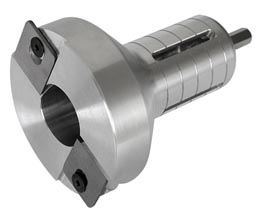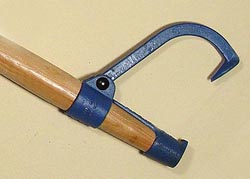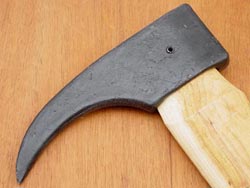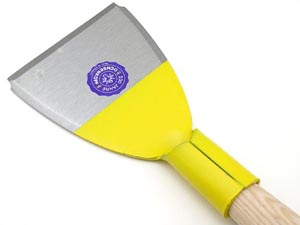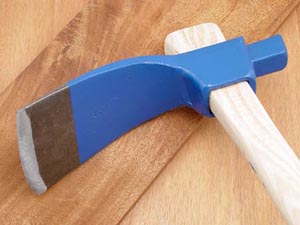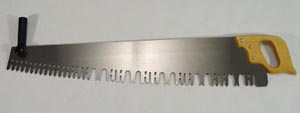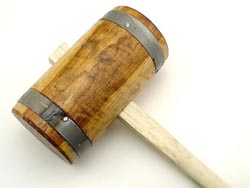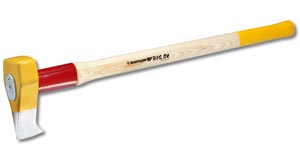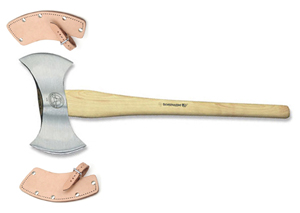
Ever get the unbridled urge to buy a throwing axe, and wonder just where one would go for such an item? Turns out there is a company that sells them, along with broad axes, splitting mauls, commanders, froes, scorps, adzes, peaveys, cant hooks, log saws, bark spuds, plumb bobs . . . you get the idea. The company is called, appropriately enough, Traditional Woodworker, and they boast a lot of gear we often think of as less than modern. What’s almost as curious as their stock is the fact that the store was started by a laid-off banker, and even that was his second career.
“My first career was as a finish carpenter in Sweden,” explained owner Erik Edstrom. “The trades are not as specialized in Sweden as they are here, so a carpenter was expected to do everything from setting rebar to building cabinets. When there is not enough work doing what you prefer, you have to be prepared to do pretty much anything, and inevitably, you end up outside pouring concrete foundations in the cold. I did not like that, so I went back to school, became a banker and moved to the U.S. to take a banking job here.
“I was made redundant from my banking job about six years ago, and along with my wife, who had been in marketing and advertising, decided to open a store. I did not want to go through the trauma of relying on someone else for my job. I wanted to be in charge of my own destiny, so we took a gamble and plunged all our savings into starting the company.
“Since I knew the field of woodworking, we decided to stick with that, and set out to find a niche that the larger woodworking specialty store chains did not exploit. We originally chose the name Traditional Woodworker to reflect our desire to carry hand tools, such as planes, rasps and spokeshaves, but the name works nicely for log and green wood tools as well.
“We have a storefront in Texas, a catalog and a website. You can buy from any of the three, and I’m happy to say, the business is growing. We don’t expect to go into power tools, but we’ll certainly expand into anything else that fits. What sets us apart from most of the other woodworking catalogs and stores is our wide selection of axes and log working tools. For instance, we probably have the best selection of drawknives in the U.S.
“It’s not just variety, though, but quality that we focus on. We’ve deliberately brought in European brands rather than Asian ones because I feel they offer not only better quality, but better value for the money. The price may be higher initially, but you will get better use and a longer life from the tool, so it becomes cheaper in the long run.
“Take a Forstner bit, for example. A cheap Chinese bit may cost a quarter of what a high quality bit will cost, but after five holes it is dull. In contrast, a good quality German bit may go 20 times as long before it dulls. You end up being able to do better work with better tools as well as working them longer. Ironically, drill bits are one item where we offer an inexpensive alternative for those who need a one- or two-time use tool, but in our catalog, they are the exception rather than the rule.
“Some of our tools are a bit unusual, even for woodworkers. We carry throwing axes, for instance, because they are made by the company whose regular axe line we carry. Axe throwing is a popular hobby among many of the same people who use axes for work.
“Typically, we sell to people who have decided to build something the old-fashioned way, often as a matter of principle rather than expediency. For instance, someone who decides to build a log cabin, a storage shed or even furniture will need material handling tools that are very different than what you may have in your shop. A good example is a cant hook or peavey, which is about four and a half feet long with a hickory handle. At the end there’s an iron hook that goes around a log, and you use the handle to roll the log. A hookeroon is also used to move logs; it is an axe handle with a sharp hook on the end. You swing it, jam the sharp point into the end of a log, then use it to drag the log.
“If you are making log furniture, you might turn to a tenon cutter, which is like a giant pencil sharpener. For those handling firewood, we offer old-fashioned one- and two-man crosscut saws and splitting mauls. If you need to split wood more precisely, or make shingles, a froe is the tool of choice, paired with a wooden mallet.
“Bark spuds and draw knives are the tools of choice to remove the bark from a log. To square up or shape logs, you’d go to a broad axe and an adze. Once you have shaped the logs and their ends, a commander, which is a huge mallet, is used to coax the logs into position. Typically it weighs about eight and a half pounds. Of course, you could also use it for setting tent pins in the circus.”
While you may not be in the market for a circus-sized mallet, Traditional Woodworker nevertheless offers a delightful romp through the tools that our forebears knew well. Truth be told, there are a lot of good reasons to renew their acquaintance.
